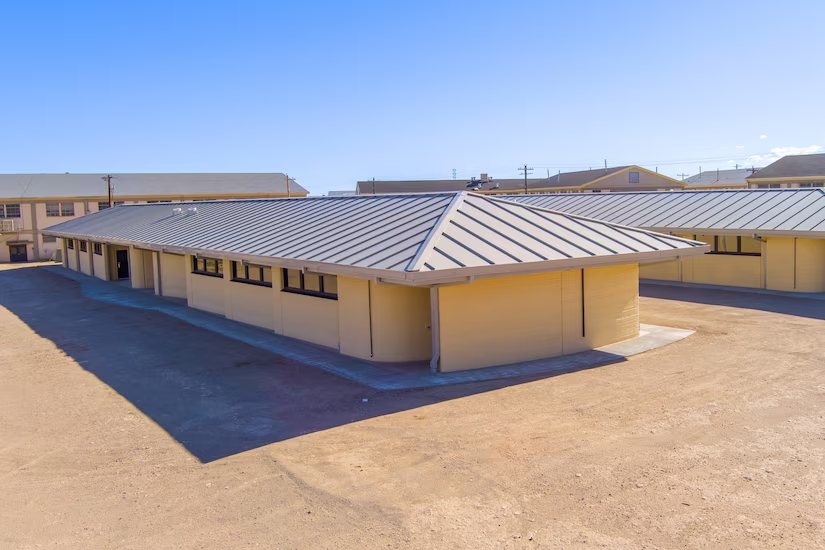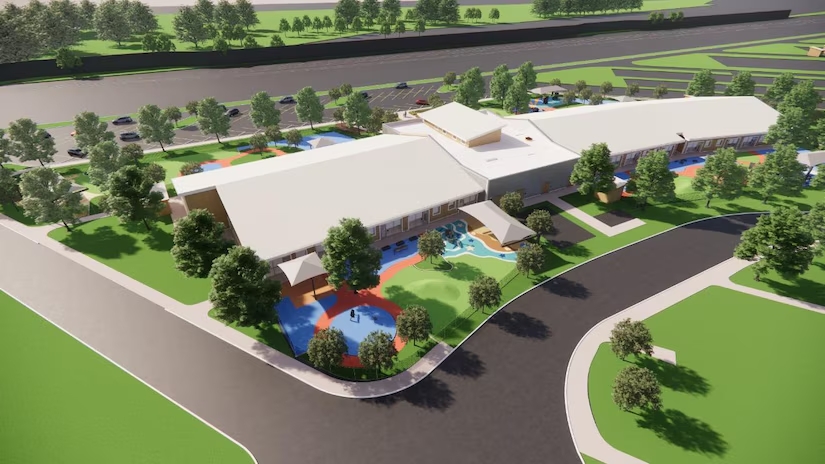The U.S. Army Corps of Engineers (USACE) and Naval Facilities Engineering Systems Command (NAVFAC) explained how advanced construction technologies – from 3D printing to mass timber to high-performance concrete – are transforming military infrastructure at a briefing on Capitol Hill this week.
The discussion covered a wide range of methods, including additive construction, high-performance cement and concrete mixes, geosynthetics, mass timber, composites, industrialized construction, prestressed structures and carbon fiber reinforced polymers. Lawmakers heard how these innovations could make future military installations more cost-effective, resilient and sustainable.
“In an increasingly complex global security environment, our commitment to innovation in military construction is not just about building structures, but about building the resilience and readiness our forces need to survive,” said Dave Morrow, director of military programs at the U.S. Army Corps of Engineers. “By working with industry to leverage these advances, we can provide a more durable, sustainable and cost-effective infrastructure for our military, ensuring taxpayer dollars are used efficiently while equipping our troops with the best facilities in the world.”

3D printing for faster, smarter building
Morrow highlighted how USACE is advancing additive construction – the 3D printing of buildings – through pilot projects at Tyndall Air Force Base in Florida and Fort Bliss, Texas. At Fort Bliss, three new barracks were completed using 3D printing, demonstrating how the approach can be used in both garrison and expeditionary environments.
“Additive construction has [the] “Potential to reduce costs, manpower, logistics and time while opening the door to improved and new applications, such as unconventional countermeasures,” Morrow told lawmakers.
To enable broader implementation, USACE's Engineer Research and Development Center helped establish uniform facility criteria that enable additive construction in 80% of the United States. These standards define the technical requirements necessary to ensure compliant, safe and functional military facilities, he said.
Expanding the use of advanced materials
Beyond 3D printing, both USACE and NAVFAC are testing new materials aimed at improving durability, sustainability and efficiency in military construction.
In Hampton Roads, Virginia, the Navy is testing the use of mass timber — also known as cross-laminated timber (CLT) — for a new child development center, said Keith Hamilton, NAVFAC chief engineer. In his written testimony, he stated that the facility will have “a hybrid outer shell made of solid wood consisting of cross-glued walls and membranes.”
“DOD has specifically recognized the applicability of CLT by producing a guidance specification,” Hamilton said. “As the CLT construction industry matures, CLT may prove more competitive and be more widely used in DOD construction.”


USACE is also exploring applications for solid wood. “We recently designed the Army's first barracks composed primarily of mass timber structural elements and are generating interest in building a project at Mountain Home Air Force Base that calls for the inclusion of mass timber construction,” Morrow said, noting that the approach could help shorten construction time.
At Marine Corps Air Station Cherry Point, North Carolina, NAVFAC tested high-performance concrete (HPC) for a new F-35 Lightning II hangar, Hamilton said. The material offers improved durability, strength and resistance to extreme conditions, as well as improved thermal and acoustic performance.
“HPC has been used extensively for our piers, runways and other critical infrastructure; and we are expanding its application,” Hamilton wrote in his statement.
Hamilton added that NAVFAC continues to work with USACE, industry and academia to accelerate the adoption of innovative construction methods. “NAVFAC is actively testing and leveraging innovative technologies, materials and methods for design and construction today, and we seek increased collaboration with industry, academia and other government partners to identify and capitalize on future opportunities,” he said.
Construction 3D printing for the military
Recently, the Texas company collaborated with the US government-backed Defense Innovation Unit (DIU) to test the military applications of 3D printing at the Naval Base Camp Pendleton. A team of eight Marines with little engineering experience trained on ICON's Vulcan 3D printer and successfully built a structure to hide a vehicle in 36 hours. The structure is 26 feet long, 13 feet wide and 15 feet high and was created from lavacrete material. After the successful test, the technology continued to be used in broader U.S. military operations.
Elsewhere in 2023, the Indian Army completed its first 3D-printed housing unit in Ahmedabad Cantonment, designed to be disaster-proof and compliant with Zone 3 seismic specifications and green building standards. Constructed by Military Engineering Services (MES) in collaboration with Gujarat-based MiCoB Pvt Ltd, the 71 square meter structure, including garage space, was constructed using 3D Rapid Construction technology.
The process included printing walls, panels and the foundation, reducing construction time to 12 weeks. At the time of this announcement, it was revealed that the Army was also testing 3D-printed prefabricated defenses and overhead protective structures, including in Ladakh, for possible operational use.
Would you like to help shape the future of AM? Join the expert committee for our 3DPI Awards 2025, launching later this summer.
To stay up to date with the latest 3D printing news, don't forget to subscribe 3D printing industry newsletter or keep following us Twitteror like our page Facebook.
While you're here, consider subscribing to our YouTube Channel? With discussion, debriefings, video shorts and webinar replays.
Selected picture shows a military barracks at Fort Bliss, Texas. Photo via War Department.